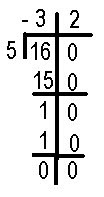22. Replace each blank square with <, >, or = to make each statement true.

a) I started with converting my fractions into decimals.

Now I know they're equal, because at the top, they have the same numbers. That is where you find your
decimal.
 b) The other number is -0.6 (Repeating) as shown in the diagram at the top. -3/5 or -0.6 is greater because its a negative.
b) The other number is -0.6 (Repeating) as shown in the diagram at the top. -3/5 or -0.6 is greater because its a negative.c) This one is pretty straight forward. -1 3/10 is equivalent to - (-13/-10) because they're both the same as saying -13/10 as an improper fraction.

d) The other number is -3.25. -3.25 is less than -3.2 because it is negative so the smaller number is larger.
e) This is a more complicated one. - 8/12 is larger. The reason why the decimal numbers are random is because for the first one, I divided 12 by 3 to get 4. Now you have to do that for the percentage. 100% divided by 3 is 33(repeating)%. Since you need 8, you multiply the 4 by 2. When you do that, you have to multiply the percentage by 2. You now should have 66(repeating)%.
**This applies to the next 2 questions also.**

f) I prefer converting it into an improper fraction. - 17/6 is greater because when I converted them into decimals, since it was negative, the smaller number was greater.
For the second conversion, instead of dividing the last number into 3, I divided it into 4. So, 8 divided by 4 is 2. 100% divided by 4 is 25%. 2 multiplied by 3 is 6. Therefore, 25% multiplied by 3 is 75%.

**NOTE: Don't let the negatives trick you. If it is a negative, the smaller number will always be greater. Also if one number in a fraction is a negative, the whole number is.**
Thank you for going through my blog. Please leave a comment behind, or any advice on what I did wrong.
No comments:
Post a Comment